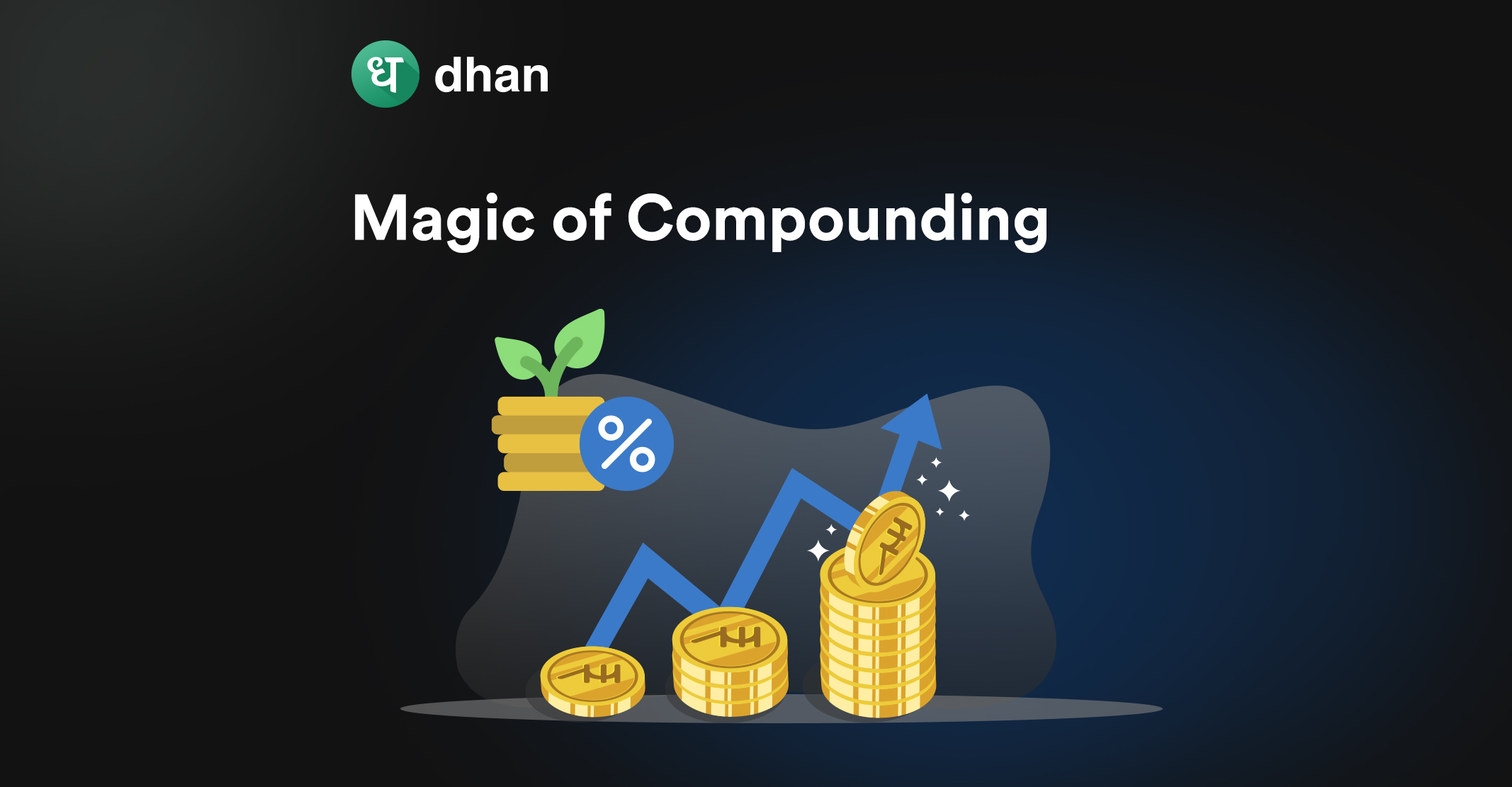Nifty 50’s remarkable growth story over the past two decades and the increasing awareness around online stock investing has welcomed many investors into the stock market.
As more investors turn to the stock market, it’s important to understand that there are multiple types of investment in stock market. This blog will take you through the popular ones.
Different Types of Investment in the Stock Market
Here are different types of investment avenues available in the stock market.
1. Individual Stocks
When you buy individual stocks, you purchase a small piece of ownership in a company.
As the company grows, your ownership stake’s value will grow leading to capital appreciation.
- Who’s this for: Those who prefer long-term, active investing strategies and are comfortable with the market’s volatility
- Pros: Direct ownership, potentially high returns, access to a variety of sectors and industries
- Cons: Higher risk, extensive research and monitoring, potentially high losses
Trading, as opposed to investing, is also a popular way to generate income from stocks.
Speculation as a means to earn short-term profits is the basis of stock trading, driven by technical analysis.
2. Mutual Funds
These financial instruments pool funds from numerous investors in order to acquire a diversified selection of stocks, bonds, or other assets.
Mutual funds offer professional management and diversification, both of which can allow the everyday investor to reap rewards from the stock market.
- Who’s this for: Those who prefer a hands-off approach and diversification
- Pros: Professional management, diversification, liquidity
- Cons: Management fees, limited control over individual holdings, market volatility
3. Exchange-Traded Funds (ETFs)
Think of ETFs as mutual funds that are traded like stocks on an exchange.
They offer diversified exposure to a particular sector, commodity, or index, balancing risk and return.
- Who’s this for: Those looking for diversified exposure and returns in line with the market
- Pros: Diversification, liquidity, low expenses
- Cons: Some fees, tracking error, market volatility
4. Index Funds
A type of mutual fund, index funds aim to replicate the performance of a specific index.
They provide extensive market coverage and cost-effectiveness with minimal portfolio turnover.
This may be music to the ears of investors who believe in passive income sources for the long term.
- Who’s this for: Investors who prefer passive strategies
- Pros: Broad market coverage, cost-effective, low turnover
- Cons: Returns track the index, limited flexibility
5. Bonds
Bonds are debt instruments wherein an investor loans money to an entity, typically corporate or governmental.
These entities borrow funds for a defined period in exchange of a fixed interest rate that is essentially the returns an investor earns.
Bonds provide steady income, making them ideal for conservative investors.
- Who’s this for: Conservative investors looking for steady interest income
- Pros: Fixed interest income, lower risk than stocks, capital preservation
- Cons: Lower potential returns, interest rate risk, potential lack of liquidity
That said, bonds can be traded as well. For traders, bonds are a means to short-term gains as a result of changing interest rates and market conditions.
6. Options
Options give investors the right, but not the obligation, to buy or sell stocks at a predetermined price.
They can be used to hedge against potential loss or existing positions.
- Who’s this for: Seasoned investors
- Pros: Flexibility, hedging, potentially high returns
- Cons: Complex, high-risk strategies, potentially high loss
Trading via speculation is much more popular in options. In fact, there are multiple best option trading strategies that fulfill short-term and leveraged trading goals.
7. Futures
These agreements bind the investor to buy an asset, or the seller to sell an asset, at a prearranged date and price. Futures can be used for hedging but carries a high degree of risk.
- Who’s this for: Seasoned investors
- Pros: Liquidity, leverage, potentially high profits
- Cons: High risk, potential for significant losses, high complexity
Speculating in futures contracts offers a highly liquid and leveraged option for traders to profit from. They can go long or short in futures to meet their trading goals.
8. Hedge Funds
Managed by professionals, hedge funds are designed for HNIs and institutions.
They are known for diversification and solid alpha but come with higher fees and liquidity issues, in contrast to mutual funds which are typically more liquid and have lower fees.
- Who’s this for: High-net-worth individuals and institutions
- Pros: Diversification, potential for alpha, professional management
- Cons: High fees, lack of transparency, limited liquidity
9. REIT Stocks
REIT stocks represent ownership in real estate assets through publicly traded companies.
They offer diversification, income, and potential appreciation.
Unlike direct property ownership, REIT stocks provide liquidity and lower barriers to entry.
- Who’s this for: Those who want exposure to real estate (indirectly) with liquidity
- Pros: Diversification, income, potentially decent returns
- Cons: Market risk, sensitivity to interest rates, management fees
10. NPS
The National Pension Scheme (NPS) is a retirement savings that allocates funds to various asset classes, including equities, debt, and alternative assets.
Investors can gain exposure to stock markets through NPS’s equity investments.
- Who’s this for: Those who want a retirement fund with exposure to equities
- Pros: Diversification, equity exposure, tax benefits
- Cons: Long-term commitment, limited flexibility, market volatility
Why Invest in Different Types of Stock Investments?
Exploring different types of investment in stock market can help you unlock a range of interesting benefits.
Buying a minor yet meaningful ownership share of robust companies gives your capital a chance to grow and, potentially, earn regular income for you through dividends.
Different investment avenues, such as equities, bonds, ETFs, and mutual funds, diversify your portfolio, reducing risk and enhancing potential returns.
Moreover, from a long-term perspective, stocks are known to outperform other asset classes.
Inflation protection, liquidity, and the privilege of partial ownership are some other benefits of this financial journey.
The stock market, therefore, is not just an investment hub, but a vibrant ecosystem fostering financial growth and stability.
| Benefits of Investing in the Stock Market |
| Privilege of partial ownership in companies |
| Potential for high returns |
| Regular income through dividends |
| Diversification across sectors and industries |
| Historically strong long-term performance |
| Protection against inflation |
Factors to Consider Before Investing in the Stock Market
Here are key factors to ponder before taking the plunge, ensuring your investment journey aligns with your financial blueprint.
1. Investment Goals and Time Horizon
Identify your financial objectives and the time frame to achieve them. These dictate your investment strategy and asset allocation.
2. Risk Tolerance
Understand your ability to endure potential losses. Make sure that you invest only the amount that you can spare without affecting your daily finances.
3. Research and Analysis
Perform thorough research and analysis on potential investments. You need to have the knowledge to make informed decisions.
4. Diversification
Spreading investments across various asset classes can reduce risks and smooth out potential returns.
5. Market Conditions
Take into account the prevailing market conditions. Market timing isn’t crucial for long-term investments, but understanding the environment helps in aligning strategies.
Common Mistakes to Avoid in Stock Market Investments
Choosing and going forward with the various types of investment in stock market can be tricky. Avoiding common pitfalls can significantly enhance your investment outcomes. Here are some to steer clear of:
1. Emotional Decision Making
Emotional investing can lead to impulsive buying or selling. Make decisions based on rational analysis instead.
2. Lack of Research and Analysis
Investing without adequate research can result in ill-informed decisions. Always conduct a detailed analysis beforehand.
3. Overlooking Diversification
Diversification helps reduce risk. Invest in a number of different assets to reduce the risk exposure.
4. Trying to Time the Market
It is incredibly difficult to time the market. Thus, many individual prefer to focus on long-term investment strategies.
5. Ignoring Investment Fees and Costs
These can eat into your returns. Always factor in transaction fees, fund management fees, and other associated costs.
Conclusion
Investing in the stock market offers remarkable potential to build wealth, provided you navigate it with diligence and knowledge.
By understanding the different types of investment options, you can align strategies with your personal financial goals.
Remember, successful investing is not a sprint, but a marathon, requiring patience, consistency, and an unwavering focus on long-term growth.
Like this? Then you’ll love these blogs:



